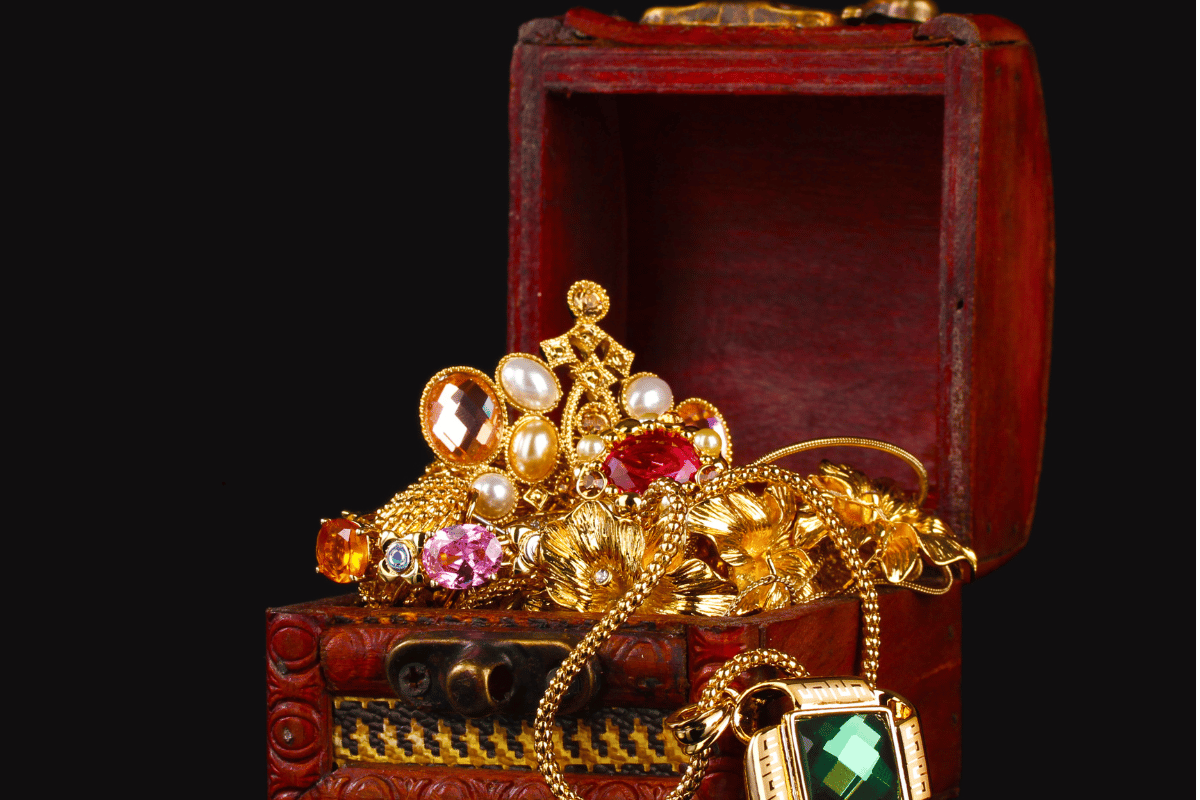The Ultimate Guide to Understanding Jewelry Karats
Did you know that the numbers on your jewelry actually have a deeper meaning? In fact, they represent the karat purity of the metal. Understanding jewelry karats is essential for anyone who wants to make informed decisions about their purchases.
This ultimate guide is here to help you navigate the world of karats, from deciphering their true value to choosing the right karat level for your needs. Get ready to become an expert in all things karats!
Key Takeaways
- Karats represent the purity of gold in jewelry.
- Different karats create different shades of gold, influencing the overall look and desirability of a piece.
- Higher karat gold is softer and more prone to scratches and dents.
- Testing and certifying the karat content ensures the authenticity of jewelry.
The Basics of Karats: What Do Those Numbers Really Mean
If you’re curious about jewelry karats, you might be wondering what those numbers really mean. Understanding gold composition is key to unraveling this mystery. Karats are a measurement of the purity of gold, with 24 karats representing pure gold. The remaining karat values indicate the proportion of gold to other metals in the jewelry piece. For example, 18 karat gold contains 18 parts gold and 6 parts of other metals, making it 75% gold.
The historical significance of karats dates back to ancient times. The concept originated in the Middle East, where goldsmiths developed a system to measure the purity of gold. They used carob seeds as units of weight, with each seed representing the weight of pure gold. Over time, this measurement system evolved into the karat system we use today.
Nowadays, jewelry made of different karats is readily available, allowing consumers to choose the desired level of purity and durability. Higher karat gold, such as 22 or 24 karats, is softer and more prone to scratching, while lower karat gold, like 10 or 14 karats, is more durable due to the higher percentage of other metals.
Differentiating Between Pure Gold and Alloys: Understanding Karat Purity
To truly understand the difference between pure gold and alloys, you need to know the specific karat purity and how it affects the composition of the jewelry. Gold purity is measured in karats, with 24 karat gold being the purest form. However, pure gold is too soft to be used in jewelry, so it is often mixed with other metals to create alloys that are more durable.
The karat purity of gold indicates the percentage of gold in the alloy. For example, 18 karat gold consists of 75% gold and 25% other metals. The higher the karat purity, the more gold content in the jewelry. This also affects the color of the gold, with higher karat gold having a richer and more vibrant yellow hue.
Understanding the karat purity is essential when it comes to jewelry composition. The table below provides a breakdown of the common karat purities and their corresponding gold content:
| Karat | Gold Purity | Gold Content |
|---|---|---|
| 24K | 99.9% | 100% |
| 22K | 91.7% | 91.7% |
| 18K | 75% | 75% |
| 14K | 58.3% | 58.3% |
| 10K | 41.7% | 41.7% |
Exploring the Impact of Karats on Jewelry Value and Pricing
When determining the value and pricing of your jewelry, it’s important to consider the impact of karats. Karats play a crucial role in jewelry design and have a long-standing historical significance in jewelry making.
Here are three reasons why karats affect the value and pricing of jewelry:
- Purity: Karats determine the purity of gold in jewelry. The higher the karat, the purer the gold. For example, 24-karat gold is considered pure gold, while 18-karat gold contains 75% gold and 25% other metals. The purity of gold directly affects its value, making higher karat pieces more valuable.
- Durability: Lower karat gold is mixed with other metals to increase its durability. While this may affect the purity, it also makes the jewelry more resistant to wear and tear. Higher karat gold, on the other hand, is softer and more prone to scratches and dents, which can impact its value.
- Aesthetics: Different karats create different shades of gold. For instance, 18-karat gold has a slightly warmer tone compared to 14-karat gold. The choice of karat can greatly influence the overall look and visual appeal of a piece, which in turn affects its desirability and pricing.
Understanding the role of karats in jewelry design and appreciating their historical significance will help you make informed decisions when it comes to valuing and pricing your jewelry.
The Pros and Cons of Different Karat Levels: Which Is Right for You
When considering different karat levels for your jewelry, it’s important to weigh the pros and cons to determine which is right for you. The karat level of a piece of jewelry refers to the amount of pure gold it contains. While higher karat levels indicate a higher gold content, they also come with certain trade-offs. One key consideration is the durability of the jewelry. Pure gold, which is 24 karats, is very soft and can easily scratch or bend. Lower karat levels, such as 18k or 14k, are more durable due to the presence of other metals in the alloy. Finding the balance between softness and strength is crucial, especially for everyday wear items.
Another factor to consider is affordability. Higher karat levels typically come with a higher price tag due to the higher gold content. However, this doesn’t necessarily mean that higher karat levels are always better. It’s important to weigh the cost versus the quality factor. Lower karat levels may offer a more affordable option without compromising too much on the overall quality and appearance of the jewelry piece.
To help you better understand the pros and cons of different karat levels, here’s a table summarizing some key points:
| Karat Level | Gold Content | Durability | Affordability |
|---|---|---|---|
| 24k | 99.9% | Soft | Expensive |
| 18k | 75% | Balance | Moderate |
| 14k | 58.3% | More | Affordable |
Testing and Certifying Karat Content: How to Ensure the Authenticity of Your Jewelry
Make sure you test and certify the karat content of your jewelry to guarantee its authenticity. The karat content of jewelry refers to the purity of the gold used in its creation. It’s important to verify the karat content of your jewelry as some pieces may be falsely labeled or contain less gold than advertised.
To ensure the authenticity of your jewelry, here are three testing methods you can use:
- Acid Testing: This is the most common and reliable method used to determine the karat content of gold. A small scratch is made on the jewelry piece, and different acid solutions are applied to the mark. The reaction of the acid with the metal will indicate its karat content.
- X-Ray Fluorescence (XRF) Testing: This non-destructive testing method uses X-rays to determine the elemental composition of the jewelry. It can accurately determine the karat content without damaging the piece.
- Fire Assay: This historical testing method involves melting the jewelry piece and analyzing the resulting gold content. It’s a highly accurate but time-consuming process, often used by professionals or for high-value pieces.
Conclusion
Now that you have delved into the world of jewelry karats, you possess the key to unlocking the true value and authenticity of your precious pieces.
Just like a skilled gemologist, you can decipher the hidden messages behind those numbers and understand the intricate dance between purity and value.
Remember, karats are like the delicate petals of a flower, each one carrying its own unique beauty and allure.
So embrace the power of knowledge and let it guide you on your journey through the sparkling realm of jewelry.




